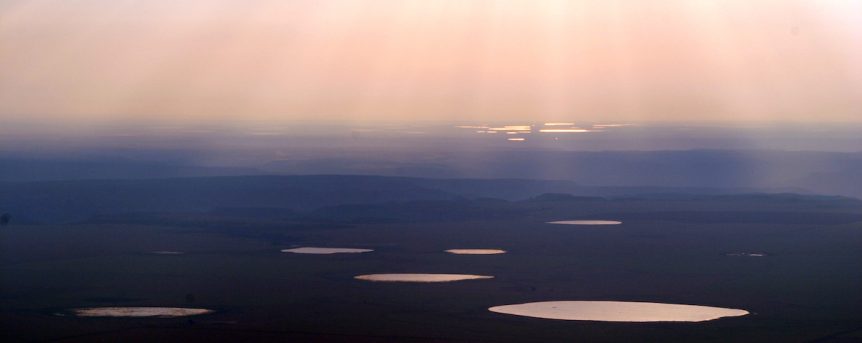Read the Transcript
Our topic this time is conservation of the Ogallala Aquifer. That massive underground sponge contains water millions of years old. But, we also know surface water percolates down and recharges the aquifer.
One means of aquifer recharge is the more than 75,000 playa lakes that dot the High Plains. These days, scientists think those shallow, ephemeral lakes might be the primary mechanism for surface water to recharge the aquifer.
For that recharge mechanism to work efficiently, playas have to be healthy. Today, a playa lake restoration story on the ranch of Grady Grissom, in southeast Colorado between Walsenberg and LaJunta. Grissom says there’s a playa lake on the ranch somebody had pitted.
“I think that pit was probably dug in the late 30s, when a lot of the dams and dirt work was done.”
An effective playa is flat and shallow. When someone “pits” a playa lake, they dig out the center of the playa to make it deeper — to turn it into a water pond for cattle.
“The playa wasn’t functioning because the water collects in that dirt pond and it’s not spread out over vegetation. When playa water gets spread out over vegetation, you have an explosion of bug life, and that’s what the migrating birds need.”
That defective playa on the Grissom Ranch got Seth Gallagher involved. He’s with the Rocky Mountain Bird Observatory (now Bird Conservancy of the Rockies), at Fort Collins. Gallagher manages RMBO’s stewardship team.
“We’ve got 12 employees in Wyoming, Colorado and Nebraska. Those folks are tasked with working on private lands, with private landowners, for proactive, voluntary conservation efforts. One of the many types of projects we do is playa conservation efforts.”
This playa restoration effort involved filling that deep spot in the playa on Grissom Ranch.
“So, what we did was we went in with a backhoe. We pushed that dirt back into the hole and reseeded it with some native western wheatgrass, which is a cool season grass that Grady really likes for his cattle. Then, since he was essentially using a livestock tank, we helped cost share on the water storage system. So we helped install a pipeline and paid for a water storage tank. From a landowner perspective, he’s got water where he needs it and when he needs it versus relying on this pitted playa, which may or may not be wet.”
The playa lake on the Grissom Ranch was returned to health. The playa lake is helping recharge groundwater; there’s been regrowth of grass, a perimeter of vegetation; and that brought the insects.
[Sandhill Cranes]“The following year, the playa was full and there was over 100 cranes that came in and spent about 10 days. During the day, they would go out in the pasture, spread out over several thousand acres, and eat grasshoppers. Then in the evening they would go back onto the playa.”
We should mention that rancher Grady Grissom gives the Rocky Mountain Bird Observatory high marks for the technical and funding assistance its staff provided him.
“RMBO, I think for a number of years, has decided that in order to preserve grassland bird habitat they need to maintain private property owners on the land. The vast majority of grasslands are privately owned, so RMBO made a commitment to work with landowners in conserving birds, and, ultimately, conserving birds means conserving grassland ecosystems.”
Playa Country, which ended in late 2016, was a weekly show that featured conservation and wildlife experts — as well as farmers, ranchers and land managers — talking about conservation practices that improve wildlife habitat and landowners’ bottom-line. Our thanks to Cornell Lab of Ornithology’s Macaulay Library, in Ithaca New York, for the featured bird song.

